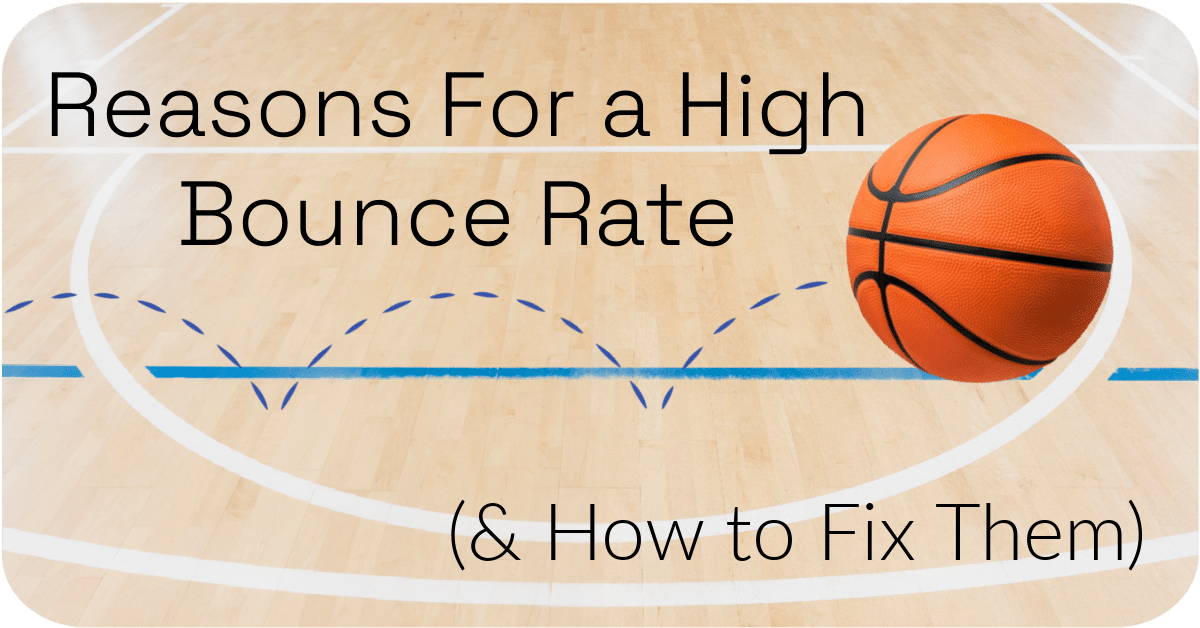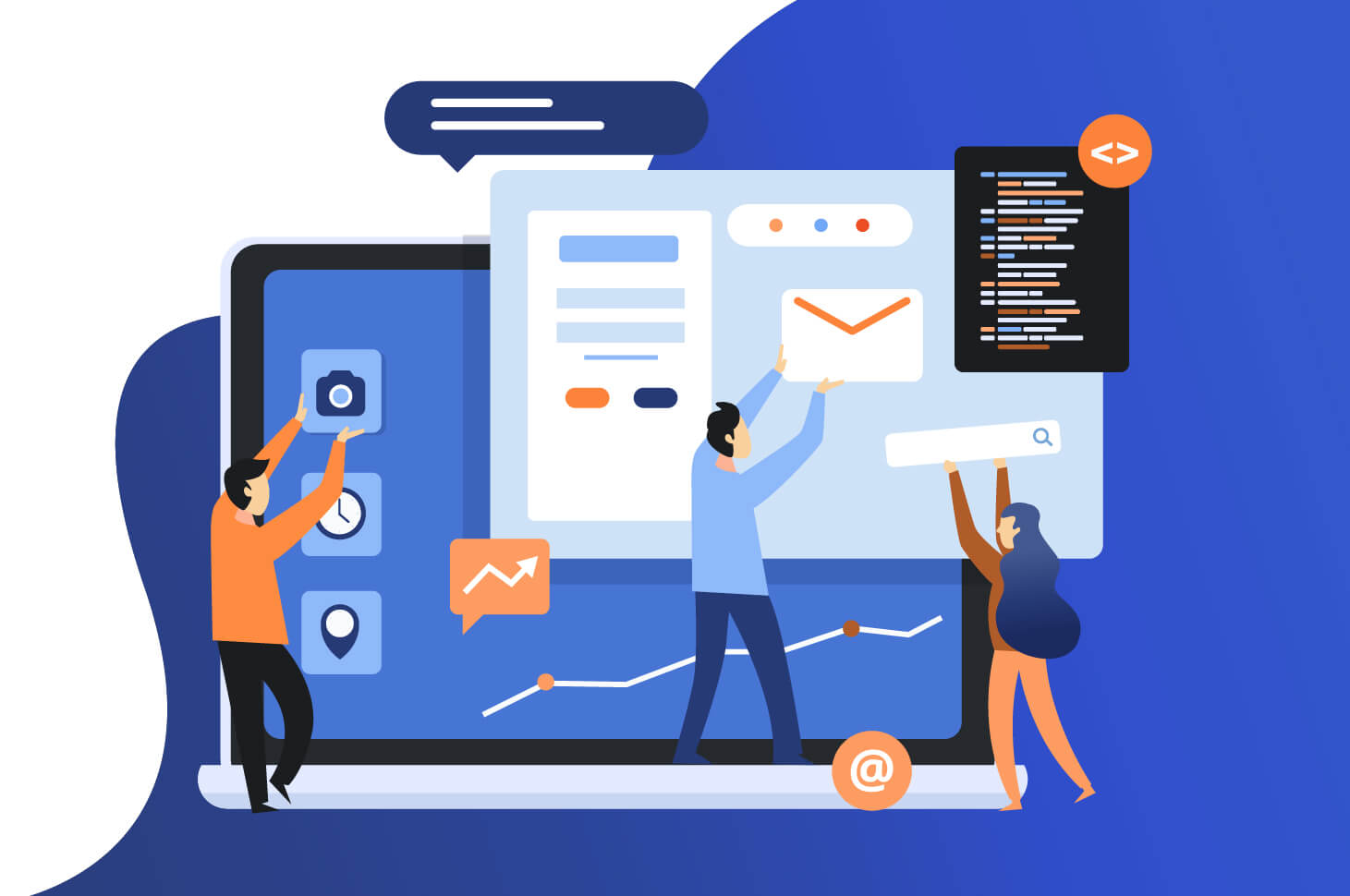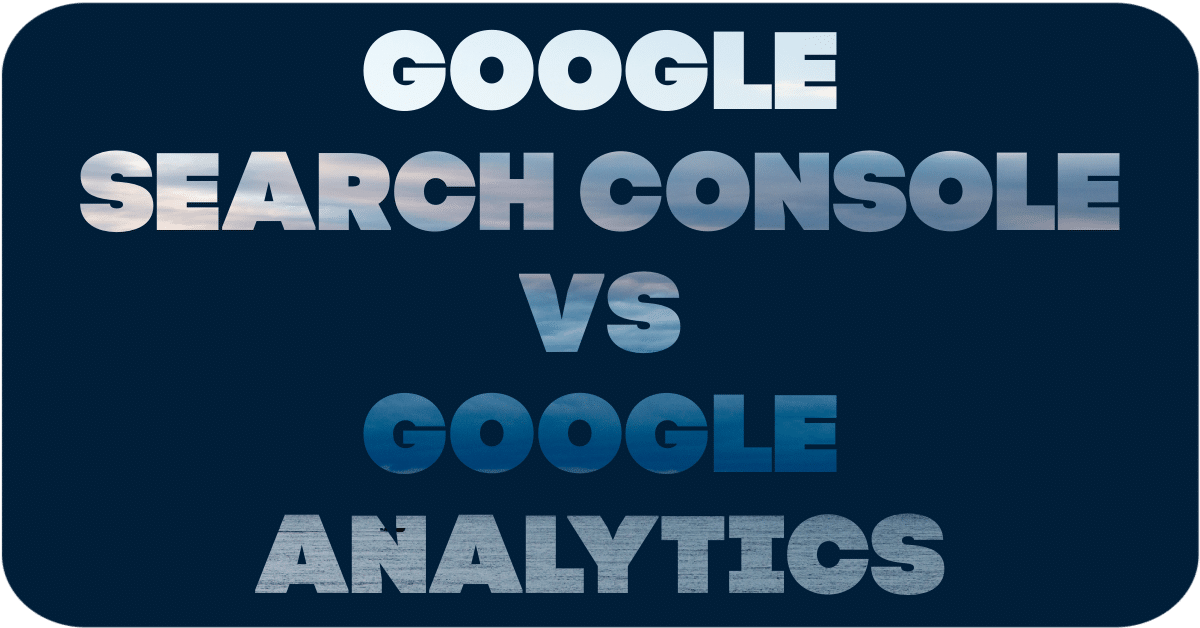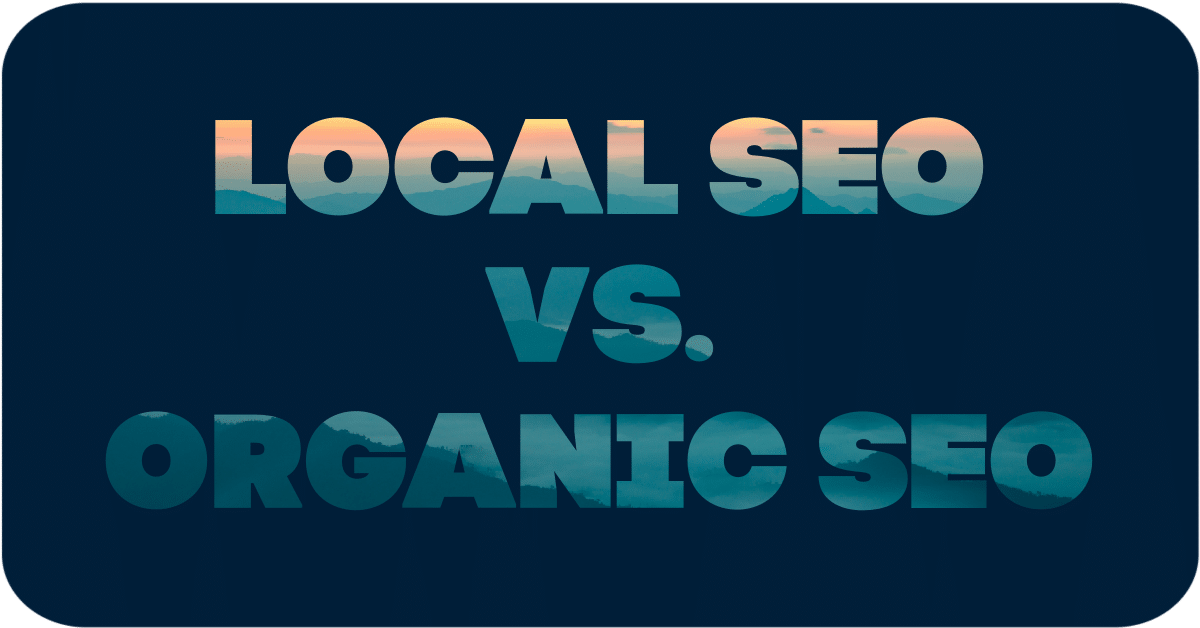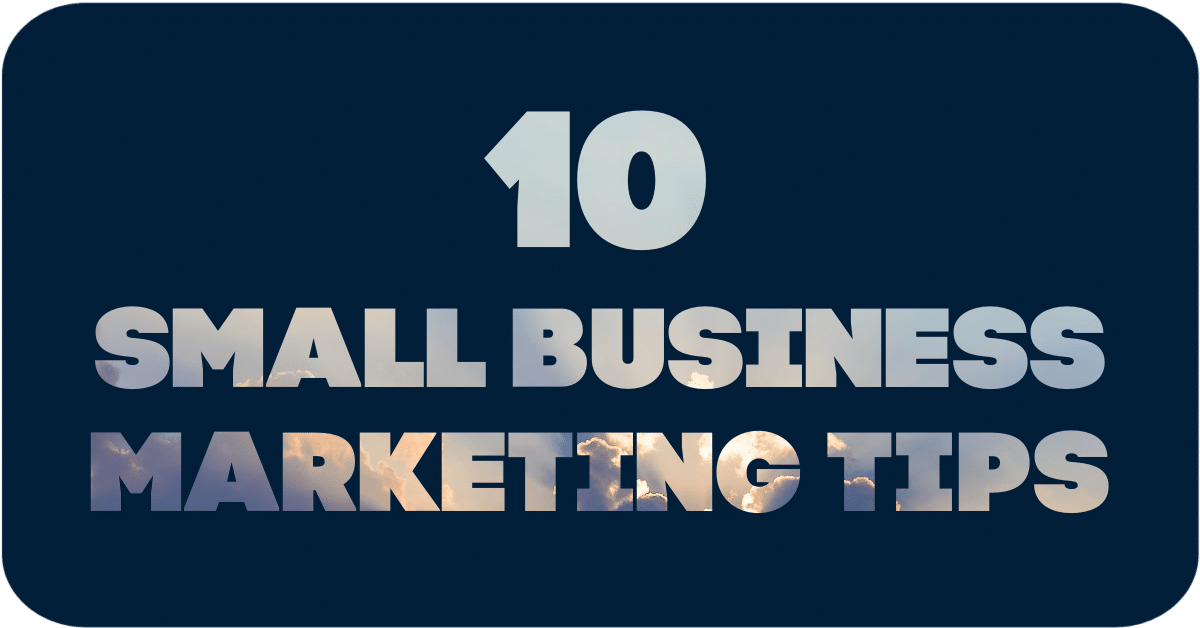Build it and they will come…But how do you get them to stay?
Let’s look at some of the most common reasons for a high bounce rate (and how to fix them).
You’ve spent a lot of time getting your website just right. The images are authentic, the content is optimized, the branding is on point, and traffic is flowing to your landing page.
But are people actually staying there?
If your Google Analytics report shows that a large number of people leave your site immediately after visiting, you’ve probably wondered what you can do about it.
Luckily, there’s a fix for that!
Let’s talk about the many reasons for a high bounce rate and what you can do to get those numbers up.
What Is a Bounce Rate?
A bounce rate is the percentage of people who visit a page on your site, stay for less than 10 seconds, and leave without clicking anything (or converting).
A web user can “bounce” off your site in many different ways: by hitting the back button, closing their browser, visiting another site, and so on.
This isn’t a metric for your entire site. Each individual page on your site will have its own bounce rate, which you can use to determine how well that page is working at converting curious onlookers to customers.
Your bounce rate is similar to, but separate from, your exit rate, which is the number of people who simply leave your site. This number isn’t nearly as troubling (after all, you can’t expect people to keep scrolling through and reading your site indefinitely), but if a particular page has the highest exit rate on your site, that could be an indication that it isn’t doing what you want it to.

What’s a Good Bounce Rate?
For obvious reasons, you want your bounce rate to be low , but you should never expect it to be zero.
Professional estimates put the average bounce rate around 50%, but there’s no easy answer to the question, “what’s a good bounce rate?”
In many cases, your industry has a lot to do with it. A good bounce rate for a blog will be a lot different from that of an ecommerce site. A site that delivers exactly what someone needs right away may have the highest bounce rate ever, despite doing its job incredibly well.
The best way to determine the health of your site is to compare it to others in your industry (a site like Similarweb can help you do this) or, better yet, compare it to past versions of itself.
Reasons For a High Bounce Rate
So, what are some reasons for a high bounce rate on a particular page—or worse, your entire site?
More often than not, the answer lies in multiple factors. Let’s take a look at some of the more common high bounce rate reasons.
Technical Issues
Obviously, no one is going to stay on your site and continue clicking around if the first thing they see is a 404 error.
There are a host of issues that could cause them to peace out, but one of the most common is slow page loading time. In the 90s, no one blinked if a page took upwards of 30 seconds to load. But in 2023, people expect a much faster load time and aren’t willing to compromise.
Website Issues
Would you eat at a restaurant that had bad lighting or a terrible smell?
It sounds like a small thing, but a bad user experience can be a huge contributing factor to your high bounce rate.
- Ugly layout
- Confusing navigation
- Not mobile friendly
- Complicated forms
- Too many intrusive elements (such as popups)
Sure, we’re told not to judge a book by its cover, but people do it all. The. Time.
Content
Content is the “substance” of your website. The meat and potatoes on the plate of the web browser.
If the meal isn’t filling, they’re gonna leave to go eat somewhere else.
We talk about it a lot, but having high quality content in the form of service pages and blog posts will help you look amazing in the eyes of your target audience (not to mention the search engine algorithm).
Say Hello, and Let's Get To Work Together
How To Reduce Your Bounce Rate
All right, enough complaining. How can you reduce your bounce rate and keep people on your site longer?
Let’s address each of the reasons for a high bounce rate and talk about how you can fix it.
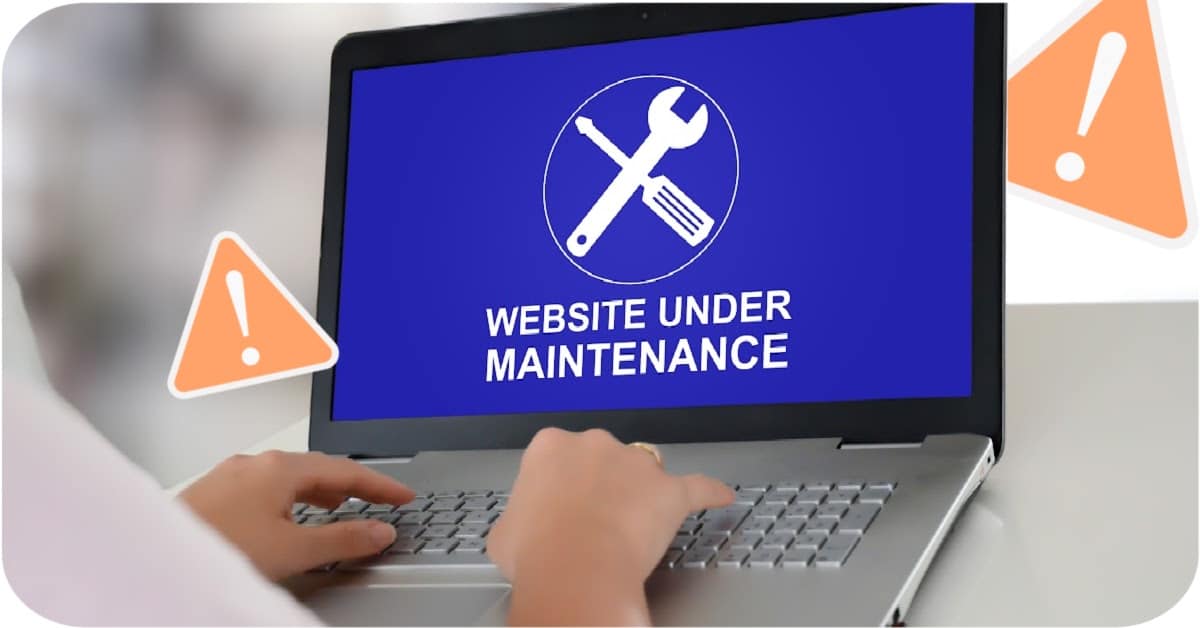
Fix Technical Issues
Obviously, if your site is breaking down, slow to load, has broken links, or experiencing any major technical issues, your best bet is to get them fixed by a professional web developer.
This won’t just reduce your bounce rate, it should also help with additional traffic (hello, SEO!) and general customer satisfaction.
Improve Website Design
A website that’s ugly, complicated, or confusing to navigate can be redesigned to appeal to your target audience.
Make sure your web designer understands and utilizes good user experience practices so that visitors aren’t turned off by your site. If they really know their stuff, they’ll be willing to do some A/B testing to experiment with different options and see which one works the best.
Add Quality Content
When the content is good enough, people are willing to forgive a little bit of bad design (just look at Craigslist or Wikipedia).
Whether it’s a robust blog or an informative “About Us” section, great content gives away a taste of the secret sauce while also highlighting your own expertise. (And yes, a good content marketer knows how to walk this line.)
Once you have some solid blog posts up, an internal link strategy will act like bread crumbs to lead visitors from web page to web page, decreasing that bounce rate even further.
Conclusion
There are many reasons for a high bounce rate, but some of them are entirely out of your control.
Our advice? Don’t focus on getting that number as close to zero as possible. Instead, set some positive goals and focus on building a strong website that accomplishes those goals.
And no, you don’t have to do this yourself!
At Clarity Creative Group, we’ve been helping small businesses grow and thrive in the digital marketplace for more than a decade. In addition to clean, modern, optimized websites, we also lead the way in online marketing strategies that generate solid leads.
Give us a call to schedule your free strategy session and see how we can help you.

